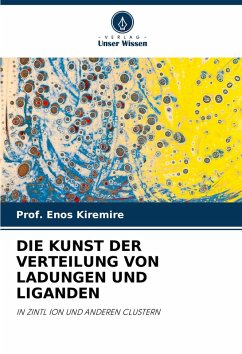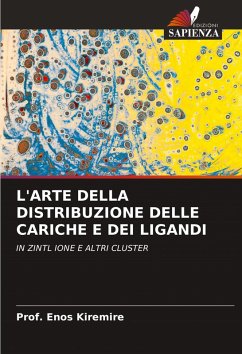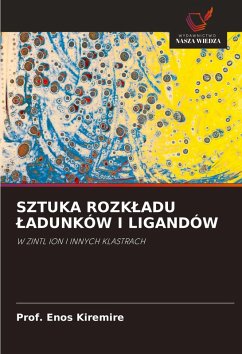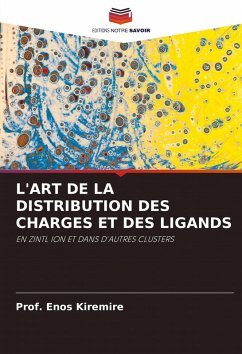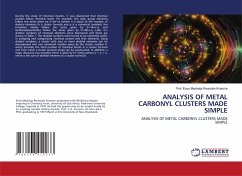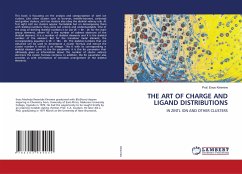
THE ART OF CHARGE AND LIGAND DISTRIBUTIONS
IN ZINTL ION AND OTHER CLUSTERS
Versandkostenfrei!
Versandfertig in 6-10 Tagen
41,99 €
inkl. MwSt.

PAYBACK Punkte
21 °P sammeln!
This book is focussing on the analysis and categorization of zintl ion clusters. Like other clusters such as boranes, metallo-boranes, carbonyls and golden clusters, zintl ion clusters also obey the skeletal valency rule. At first sight zintl ion clusters appear formidable but on decomposing them with skeletal numbers, they come out orderly and understandable. One of the ways of deriving skeletal numbers is to use VE = 8n - 2K for the main group elements, where VE is the number of valence electrons of the skeletal element, N is a number of skeletal elements and K is the skeletal number of the ...
This book is focussing on the analysis and categorization of zintl ion clusters. Like other clusters such as boranes, metallo-boranes, carbonyls and golden clusters, zintl ion clusters also obey the skeletal valency rule. At first sight zintl ion clusters appear formidable but on decomposing them with skeletal numbers, they come out orderly and understandable. One of the ways of deriving skeletal numbers is to use VE = 8n - 2K for the main group elements, where VE is the number of valence electrons of the skeletal element, N is a number of skeletal elements and K is the skeletal number of the element. But for the transition metal element, the corresponding equation is VE = 18n - 2K. The skeletal numbers that are obtained can be used to decompose a cluster formula and extract the cluster number K which is an integer. This K with its corresponding n skeletal element gives us the Kn parameter, it is this Kn parameter that ultimately gives us information about the number of cluster valence electrons the cluster formula contains. In addition, the Kn parameter also provides us with information of tentative arrangement of the skeletal elements.



